To thrive in this digital age, restaurants must include online and social media in their marketing strategy. But with so many online resources to consider and new ones popping up every year, what chances do small businesses have against bigger ones? Mastering this small business guide to Google Maps is a good start.
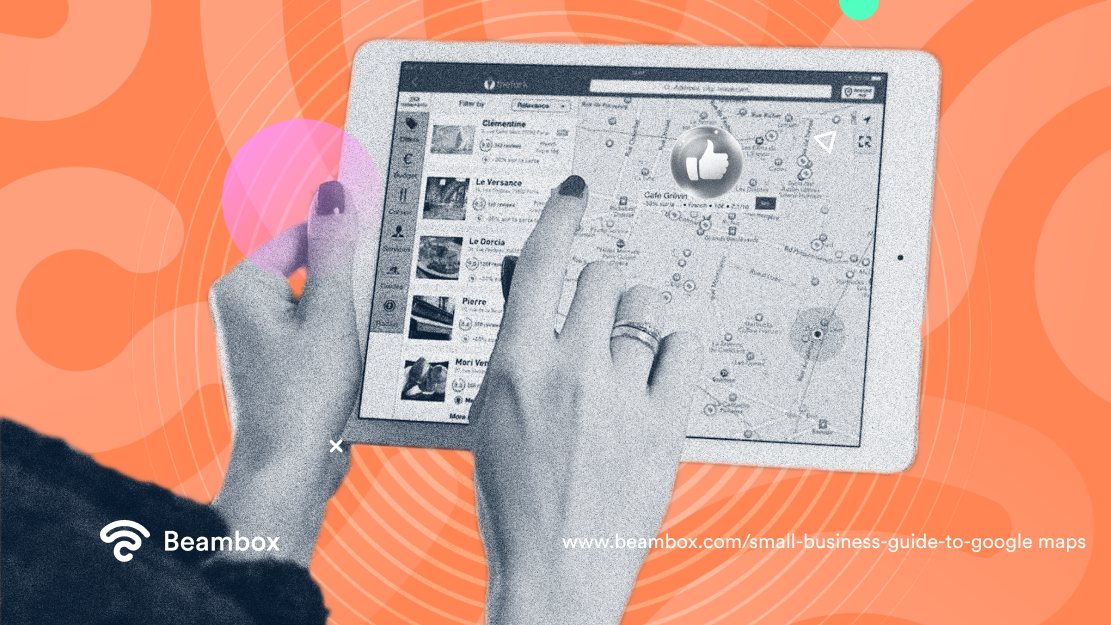
For one, proximity-based searches level the playing field for large and small businesses. Google Maps results weigh on searches within a specified radius of one’s location. According to data, searches with the keyword “near me” increased up to 500% from 2015 to 2017.
If your restaurant business, product, or service is listed in Google Maps and is located nearby, it will appear on the customer’s search results. It is easier and simpler for both the consumer and brick-and-mortar storefronts.
Here are the basics of getting your business listed on Google Maps.
Small Business Guide to Google Maps: How To Set Up Google Maps for Business
A successful marketing campaign on Google Maps ties to a Google My Business account. So you must first create your profile in Google My Business and link it to your business listing on Google Maps. This small business guide to Google Maps will help you do that.
Signing up for a My Business profile is a breeze, although you might have to wait a while for a confirmation code. So the earlier you sign up for one, the better.
Here you’ll find how to set up Google Maps for Business:
- Go to the Google My Business website and click “Start now.”
- Sign in with your Google account, or create a new one.
- Enter your business name and address, and select your business category.
- Verify your business by phone or mail.
Once your business is verified, you can add more information such as cover photo, location and product photos, business hours, and contact information.
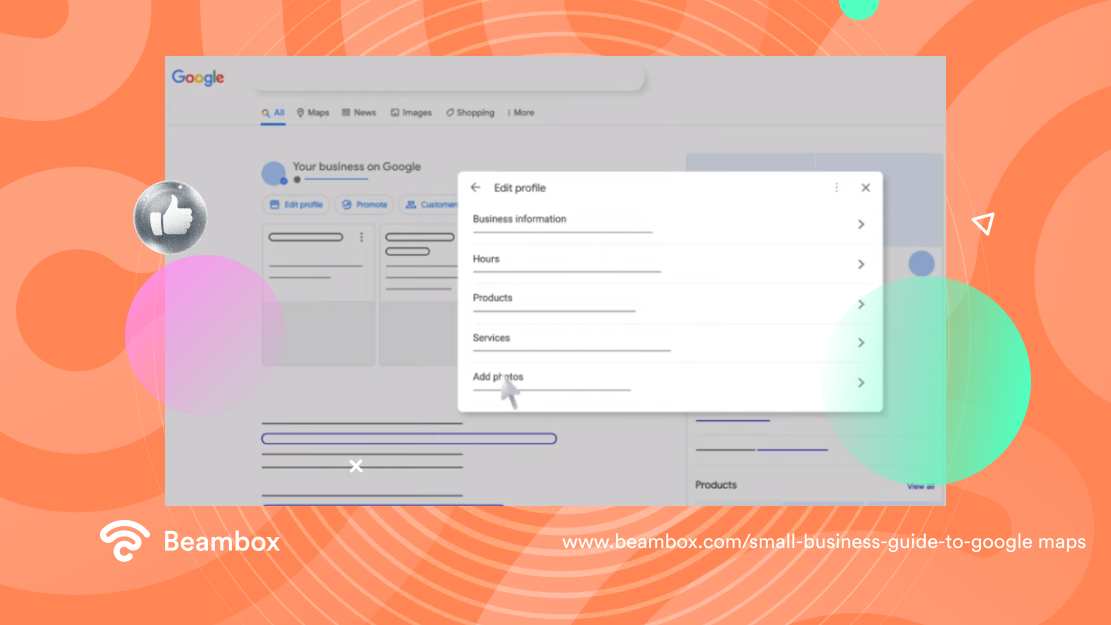
Make sure your business is listed on Google Maps and claim your listing by following the steps below.
Small Business Guide to Google Maps: How To Put My Business on Google Maps for Free
To have a Google My Business listing, your business must have a physical location that customers can visit and must serve customers within a specific service area or at one particular location.
Adding your business on Google Maps is free unless you plan to use it on your website or mobile app. You will then need to create a Google Maps Platform API key, which may be subject to usage fees based on usage limits and features. You will need to monitor and review your usage on your Google Cloud Console to avoid unexpected billings.
Here’s how to put My Business on Google Maps for free.
- Go to google.com/maps or the Google Maps app on your smartphone. Search for your restaurant’s name. Note: Anyone can add a business to Google Maps. It is best to check and ensure that your business listing doesn’t already exist.
- If your business appears in the drop-down menu with a location indicated, then a listing exists. You can skip this step.Note: If you did not create the listing, don’t fret. You can always claim the listing and then add details to your restaurant’s profile.
- If your business doesn’t appear, select “Add a missing place” in the drop-down menu. Follow the prompt to provide information about your business.
- Add information to your Google Maps business listing.
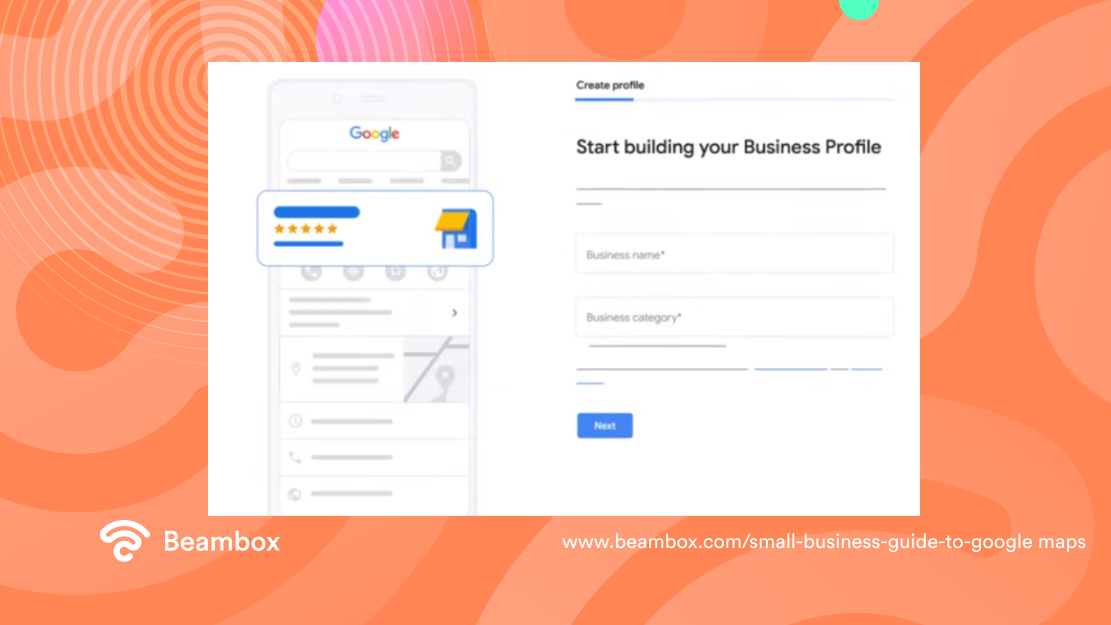
Now that you have a free Google Maps business listing and a Google My Business account linked to it, you can start optimizing your listing to gain the most out of Google Maps. This small business guide to Google Maps includes tips on how to do that.
Small Business Guide to Google Maps: Maintaining an Accurate Listing
Search engines will flag unreliable data, which will hurt you in the search results. To keep your business information consistent, refer to this small business guide to Google Maps to review the tips below.
-
Maintain an information worksheet. Create and keep a worksheet to simply copy and paste the information so all your online listings are the same. Make sure the data is complete to the smallest detail such as room, floor, and building number, if applicable.
-
Use your local phone number. A local number works well with Google rather than a 1-800+ number. Your local code helps Google identify your proximity with ease.
-
Update your operating hours. Google Maps show your business hours and indicate if your business is closed, open, or closing soon. By constantly updating your work hours, Google gets the signal that your listing is active. A continuously updated profile indicates that your business is reliable and trustworthy.
-
Craft a well-written business description. A carefully worded business description will help prospective visitors see your unique offer and what makes your restaurant stand out. It must build a connection between your brand and what searchers are looking for.
-
Pick the correct categories for your business. The category you select for your business on Google Maps is very important. Choose primary and secondary categories from your Google My Business dashboard to rank higher in Google Maps.
Small Business Guide to Google Maps: Local Guide Google Maps
Google Local Guides is a program run by Google that allows users to contribute to Google Maps by adding information, reviews, and photos of places they visit. Participants in the program are called local guides. By contributing information, local guide Google Maps contributors help others find and learn about new places and also receive rewards and perks from Google in return.
Local guides are encouraged to share their knowledge about their city and neighborhoods, the best places to eat, and the hidden gems only locals know. By placing your business on Google Maps, you help local guides find you easily, and in return, they can review your place.
How can you tap into Google Maps’ local guides to promote your business?
Enhance your free Google My Business listing by adding more details such as your restaurant business logo, pictures (especially of your storefront), and happy customer reviews with their photos.
A few pictures of your exterior will help guests spot your place easily. You can also post photos of your interior to help visitors anticipate what they’ll see and dispel any uneasiness on their first visit.
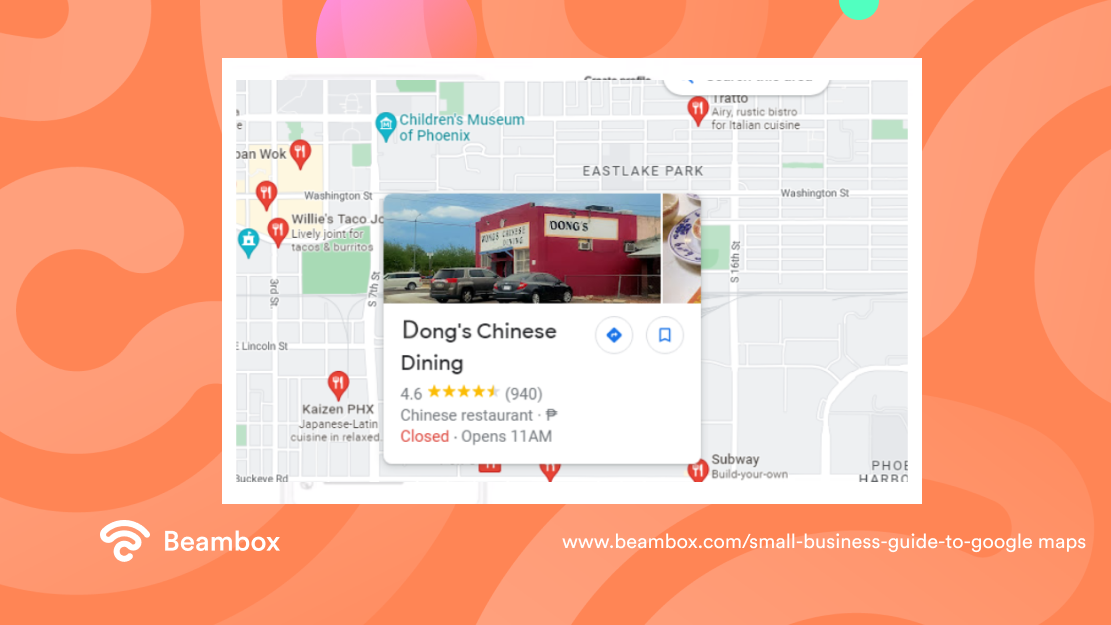
Small Business Guide to Google Maps: Leverage on Small Business Google Account
A Google account for small businesses is an account used by a small business to access and use various Google services, such as Google My Business, Google Ads, Google Analytics, and the G-Suite.
A small business guide to Google Maps is complete with discussing these services.
Here’s how a small business Google account can help your restaurant business grow.
-
Google My Business allows you to manage their online presence across Google, including Google Maps and Google Search.
-
Google Ads is a pay-per-click advertising platform that allows you to promote your business on Google Search, Google Maps, and other websites across the internet.
-
Google Analytics is a free web analytics service that will help you track and analyze website traffic, user behavior, and conversions.
-
G Suite is a set of productivity tools offered by Google, including Gmail, Google Drive, Google Calendar, and other tools.
Small Business Guide to Google Maps: Getting a Good Ranking
Aside from proximity-based results, Google also shows search results by rank. What are these, and how can rank results benefit you?
While local business results are the most common, they’re not Google’s only filter. Sometimes, Google includes restaurants that are not even close or does not show their physical address. Why?
Google takes other factors into account. One factor that affects your rank is the number of positive customer reviews.
Engaging customers to post reviews. Google assigns value to positive customer engagement. Customers can post reviews and influence your ranking with Google’s 5-star rating. The more reviews you get, the more traction you get from Google Maps. Responding to the comments doubles your chances of ranking higher.
Getting customers to post reviews while still in your restaurant is very effective when handled well. People are more likely to write a review right after the experience while their memory is still fresh, and expressions are likely to be more natural. Providing guests access to strong and reliable Wi-Fi while in your restaurant will encourage such spontaneous reviews.
When your restaurant receives a dozen positive reviews, Google’s algorithm recognizes your business as an “authority” in your category. Couple this with consistent information in all your online listings, and Google will surely raise your ranking.
This is called “authority optimization” in every small business guide to Google Maps. Positive reviews from organic sources increase your ‘authority’. Google obliges by including you in the top three local search results, also called the “Local Three Pack” box displayed right under the Google Map search result. That is where you want your restaurant to appear.
What’s exciting about authority optimization is that it is free. Time is the only investment you need, and returns are guaranteed once your restaurant gets that coveted top spot.
Small Business Guide to Google Maps: Do You Need Paid Ads?
While signing up for Google My Business and Google Maps is free, businesses can do better by availing of paid advertising.
Google has already been offering Search ads to businesses for some time, even including maps in the searches. So, what is the difference between Google My Business and Google Maps? What is the advantage of one over the other? How much does it cost to advertise your business in Google Maps?
Google Maps ads have advantages over Search ads. For one, Google Maps ads can make your business stand out and be noticed.
Imagine this: A customer is using Google Maps for directions in your area when he notices your restaurant in his path on the map. Then, looking at the Map, a promoted pin icon grabs his attention, and he checks it out. Suddenly, he needs to stop and take advantage of the promo.
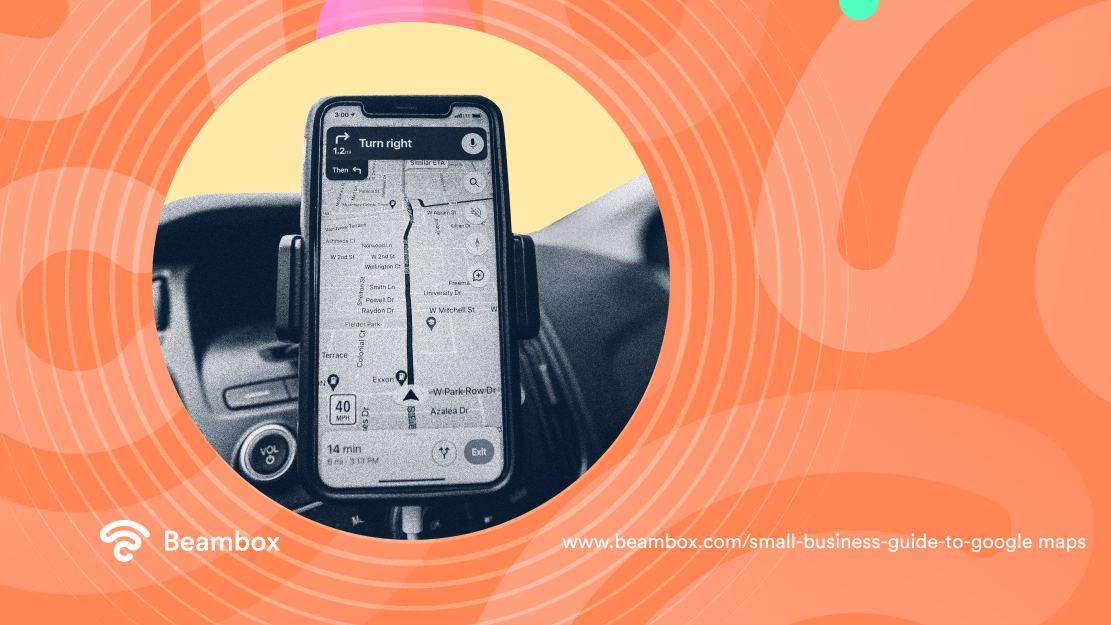
Now compare this to one who is using Search ads. A user must type a specific search in the browser before displaying an ad and a location. Only then will the customer see your pin.
On Google Maps ads, all the user must do is be in the area for ads to be displayed.
Google Maps ads work well for restaurants and local shops dependent mainly on foot traffic to attract visitors.
Google Maps ads are also convenient and work well to boost user conversion. Users are easily encouraged to take action. This small business guide to Google Maps will show you how.
For many, searching on their mobile device is the easiest way to find nearby businesses. The ease of using Google Maps raises customer engagement and incites users to call or check for directions while in the area.
Small Business Guide to Google Maps: Using Paid Ads
With over a billion users searching for businesses, it didn’t take long for Google to start offering promoted results for Google Maps searches.
Promoted Ads. With paid ads on Google Maps, you can get in front of customers when they search for businesses just as in Google Ads. Signing up is also free for both platforms. You only pay for results, such as clicks to your website or online calls.
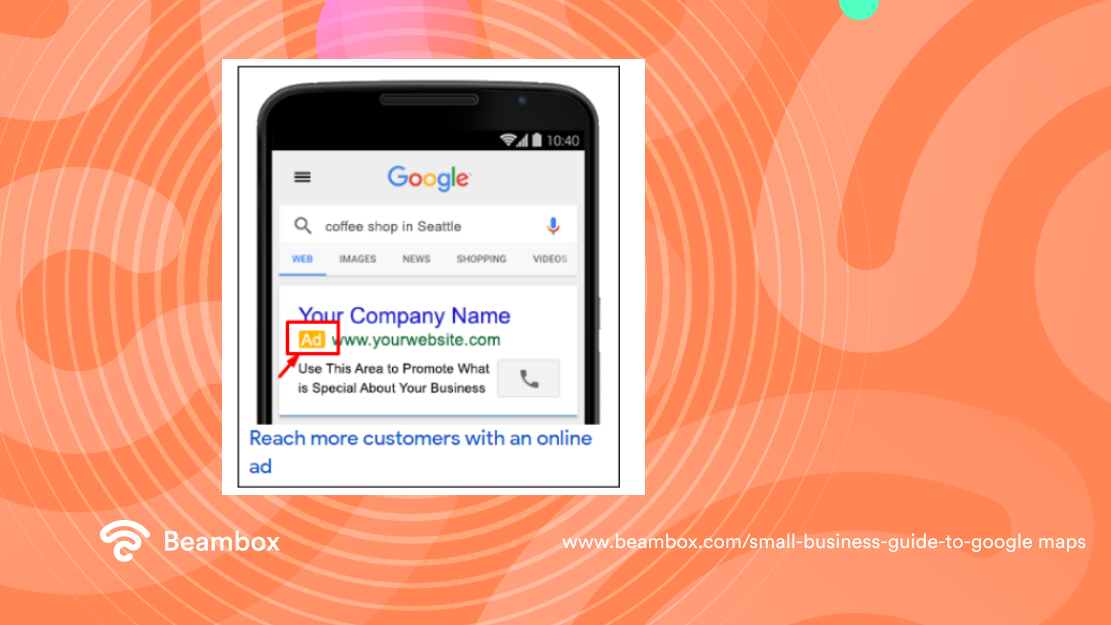
For ads in Google Maps, your ad will be shown in Google Searches and Google Maps app on mobile gadgets, and Maps on desktops.
Promoted Pins/Square Pins. During the pandemic, Google launched new square-shaped map pins that make listings stand out in Google Maps. Also called “Smart campaigns,” the square pins on Google Maps display your business category and highlight specific offers such as takeout and delivery only, curbside pickup, or limited capacity.
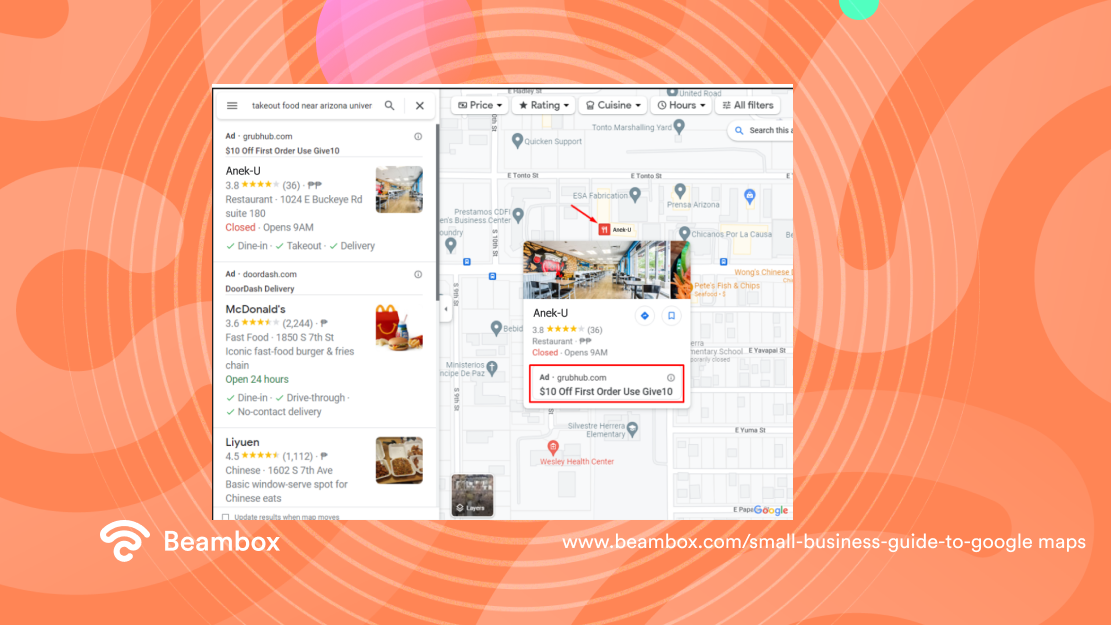
In the sample picture above, notice the special red square pin indicating a ‘smart campaign’ in contrast to the standard yellow pins with the fork and spoon icons. Clicking the promo pin will show you the restaurant’s in-store promo.
In-Store Promotions. Google Maps now feature specific in-store promotions where businesses can place ads for special campaigns on their page. These can be special discounts, product bundles, or events. In Google Maps, the standard pin appears for your business. Once the user clicks on your business profile, the special in-store promotion will be shown.
Search Shopping Tab and Online Menu. Google allows online sellers to share their inventory of physical products through the Shopping tab. Restaurants provide an online menu feature. Sellers can indicate availability, location, and ways to order their products. Restaurants affiliated with 3rd party online food delivery platforms can avail of this arrangement.
Keep Improving Your Small Business Marketing on Google Maps
Whenever you apply the tips in this small business guide to Google Maps, your listing quality will also improve. Sure, it may cover only some of your Google Maps concerns, but none of what we discussed here will hurt your business. Instead, it will increase consumer engagement, lead to more foot traffic, and, eventually, more conversion.
Google Maps and other services from Google are constantly adapting to new consumer needs and are likely to advance further. As more products and services are developed, the challenge is to help consumers quickly gain access to the information they need in their decision-making.
For business owners, the competition to get consumers’ attention requires that they keep up to date with current technologies and automation. This simple small business guide to Google Maps, combined with your restaurant’s marketing strategy, will get your business at the top of Google Maps and other searches.
Many restaurants rely on accurate information to create digital marketing strategies that bring conversion among first-time visitors. An excellent in-house wi-fi service, such as Beambox, helps harvest customer data that, in turn, allows restaurateurs to make informed marketing decisions. Learn more about how this can be done and start growing your business.
Get Started With Free WiFi Marketing
Beambox helps businesses like yours grow with data capture, marketing automation and reputation management.
Sign up for 30 days free